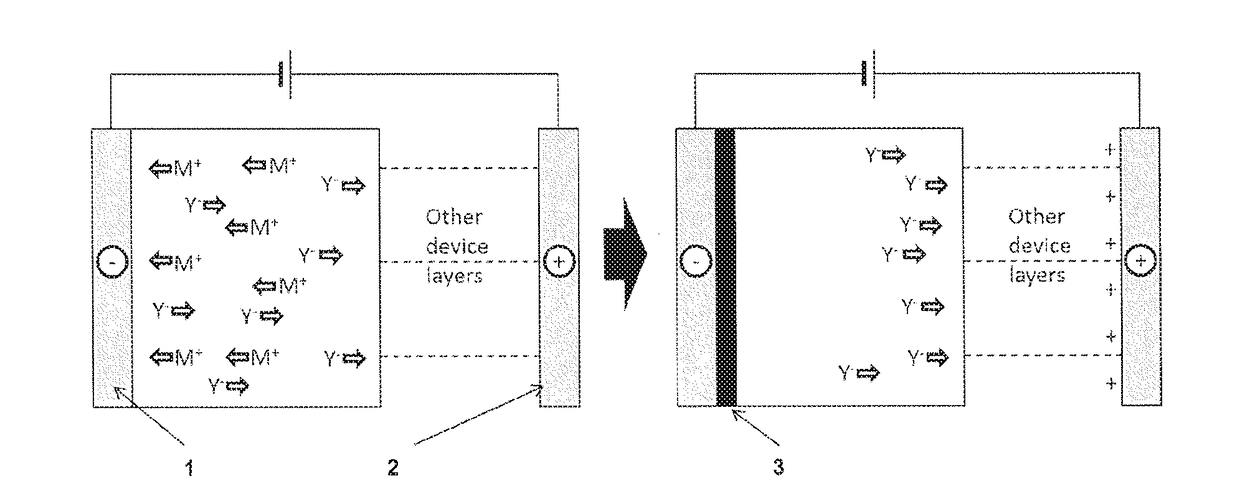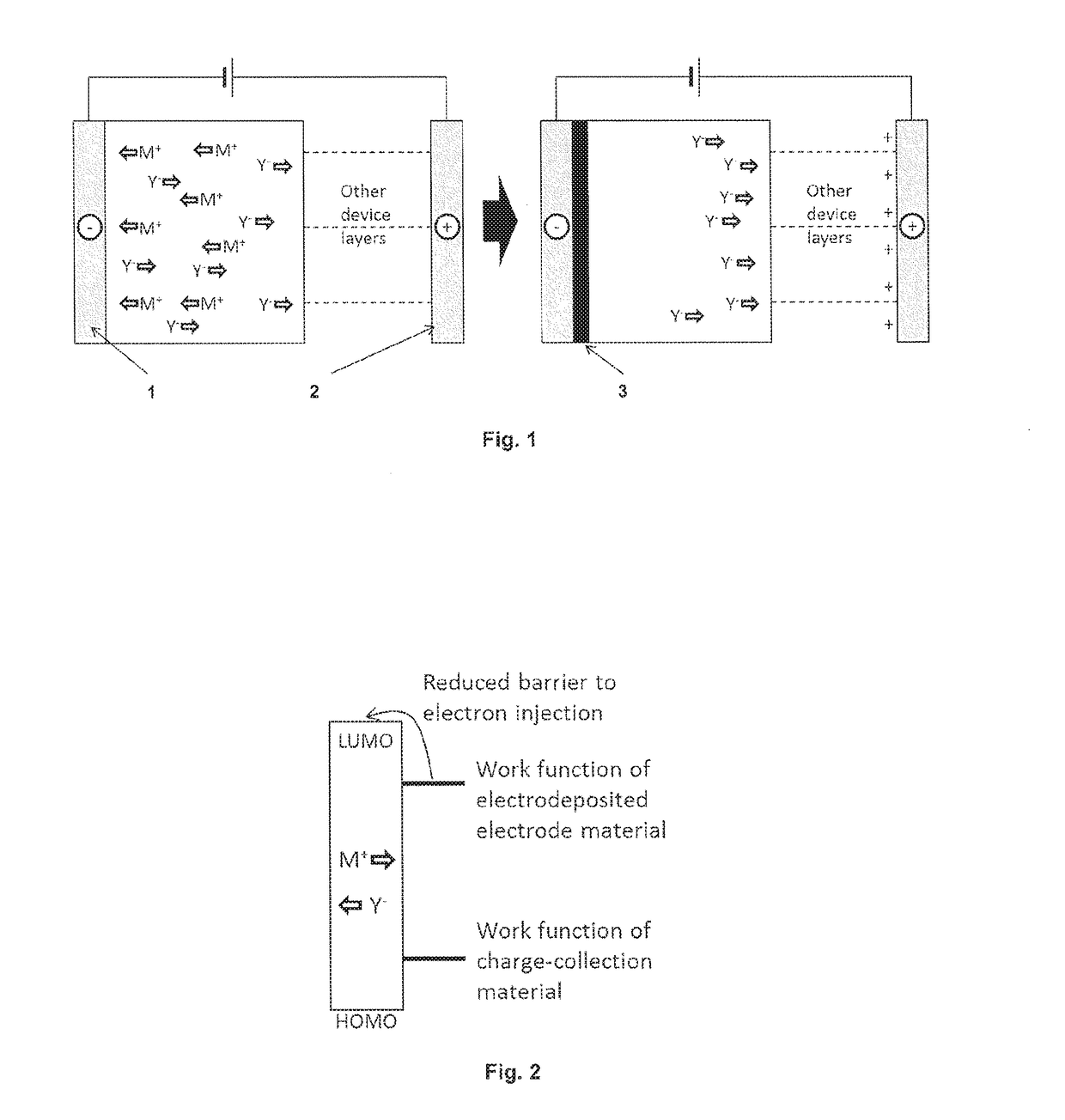Methods of manufacturing electrodes by in-situ electrodeposition and devices comprising said electrodes
a manufacturing method and electrode technology, applied in the field of manufacturing electrode materials by in-situ electrodeposition and devices comprising said electrodes, can solve the problems of high cost, high cost, complicated and unsuitable for many metals, and the electrodes must be handled in high vacuum, so as to increase the number of possible device configurations, enhance charge injection, and increase the reactivity to air
- Summary
- Abstract
- Description
- Claims
- Application Information
AI Technical Summary
Benefits of technology
Problems solved by technology
Method used
Image
Examples
Embodiment Construction
Methods of In Situ Electrode Electrodeposition and Charge Injection
[0018]For a more complete understanding of the present invention, reference is now made to the following description of the illustrative embodiments thereof:
[0019]This invention describes a process for making an electrode in situ inside the device using electrodeposition and devices produced by using this process.
[0020]In one embodiment, the present invention relates to a method of manufacturing an electronic device or a charge storage device, comprising the steps of: providing a multilayer film comprising a electrodeposition layer formed of a plating composition comprising metal or metalloid ions and an n-type electroactive material, and a negative charge collection layer in contact with the electrodeposition layer; and subsequently electrodepositing an electrode layer in situ on a surface of the negative charge collection layer by reducing the metal or metalloid ions to a non-ionic state.
[0021]The expression “in si...
PUM
| Property | Measurement | Unit |
|---|---|---|
| ion conductivity | aaaaa | aaaaa |
| work function | aaaaa | aaaaa |
| n-type semiconductive | aaaaa | aaaaa |
Abstract
Description
Claims
Application Information
 Login to View More
Login to View More - R&D
- Intellectual Property
- Life Sciences
- Materials
- Tech Scout
- Unparalleled Data Quality
- Higher Quality Content
- 60% Fewer Hallucinations
Browse by: Latest US Patents, China's latest patents, Technical Efficacy Thesaurus, Application Domain, Technology Topic, Popular Technical Reports.
© 2025 PatSnap. All rights reserved.Legal|Privacy policy|Modern Slavery Act Transparency Statement|Sitemap|About US| Contact US: help@patsnap.com



